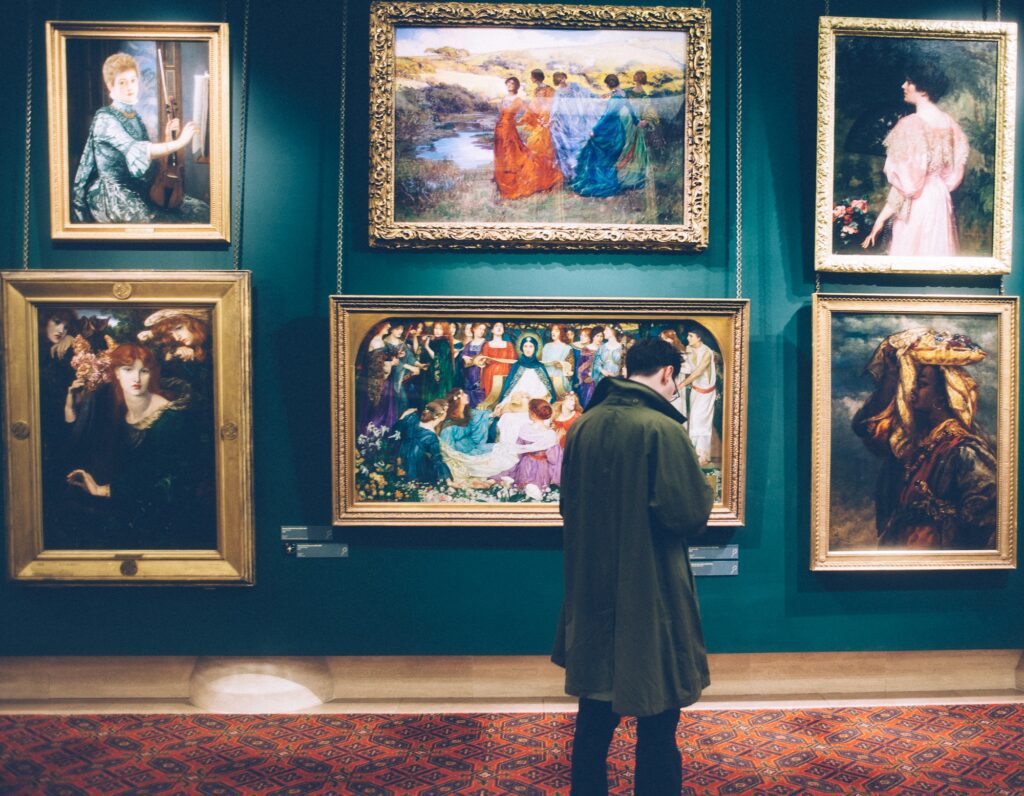
What Makes Art Unique as an Asset Class?
Are you thinking of getting started with art investing? It’s an exciting area to be considering. After all, the contemporary art class prices have outpaced the S&P 500 over the last 25 years. But knowing that art is an exciting investment and understanding how it works are two different things.
Here’s a look at art investing and what makes art unique as an asset class.
What Makes Art an Asset Class?
With an estimated annual transaction volume of 65.1 billion USD, according to the UBS 2021 Art Market Report, there’s no question that art represents a massive asset class. But the perception surrounding art as an asset class is still unfamiliar to most common individual investors.
A 2018 study done by Freemans, an auction house located in Philadelphia, stated that every day Millennial investors are twice as likely as any other age group to view art as an asset class and use it for financial gain. This is opposed to previous generations, who bought art primarily for aesthetic appreciation. In their 2021 report Art as an Asset Class, Deloitte stated “that there is a growing recognition of art as an investment class by investors. People become more sophisticated in their financial and estate planning, and they begin to view art as an investment.”
Regardless of your take on art as a financial asset, art overall is considered a physical asset or tangible asset. This is not to be confused with a commodity asset, a type of raw material asset.

Unique Features of Art as an Asset
While art has quite a bit in common with other tangible assets (namely its physical nature), art also has several unique features that make it entirely unlike any other asset class -or even other alternative investments.
Low Correlation
Art, especially the contemporary and blue-chip variety, is known to have a low correlation with stocks and bonds, which offer diversification possibilities over time and across the business cycle. Traditionally, this has led art to be seen as a hedge during periods of higher inflation.
In 2020 Deloitte reported, “In times of inflation, art prices rise above average compared to the prices of other goods.”
Exclusively & Culturally Rich
With incredibly high prices averaging around $3.7 million per painting, the blue-chip category of art creates high barriers to entry through its sheer cost. Fine art, especially the blue-chip variety, was only accessible to ultra-high net worth individuals. This created a virtually unsaturated asset class throughout its history.
Additionally, art holds a contingent value based on its cultural value. An artist’s reputation and significance can mark cultural value. The perception of ownership and collecting such an item adds a cachet level to the owner’s reputation and importance, making this asset class both exclusive to the HNW and contributing to their societal perception.
Unseen Factors
Those are the (comparatively) visible factors. But the truth about art world economics is that, like the universe, art is heavily influenced by the scarcity of supply.
Basically, the art market relies on scarcity (the law of supply and demand in action). You might think you can see the whole art supply at any given moment and how it interacts with itself. In reality, there’s a vast collection of art that has not, cannot, or will not enter the market, and it exerts an economic influence on the art visible to you.
This generally comes down to two things: museum accessions and philanthropic giving. Picture museum accessions into which art submerges into private collections, which may never hit the market again. Once it does, it could influence the value of the art that remains. The same applies to philanthropic giving, which takes art out of a private collection (where it might come back to the market eventually) and into a museum holding where it’s unlikely to be resold.

Your Partner in the World of Contemporary Art Investing
That’s where Masterworks come in.
We’re on a mission to democratize the world of blue-chip art investing. We are a platform that allows everyday investors to purchase shares in authenticated million-dollar artworks. We identify potential high-growth artist markets and pieces, and then our art sales specialists get to work authenticating a piece and navigating the sale. All you have to do is speak with one of our membership representatives to get started. Ready to try your hand at contemporary art investing? Fill out a membership application to learn more.
See important Regulation A disclosures at masterworks.io/cd